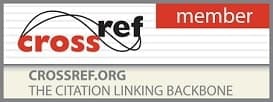Vol. 8, Issue 2, Part B (2025)
Analysis of performance and comparison study of two clinical chemistry auto analyzers using six sigma methodology and quality goal index
Huda Salim Neama, Anne Khazal Rijub-Agha and Husham Kamil Hashim
Background: Accurate and reliable results in clinical laboratories are essential for effective diagnosis and treatment. This necessitates continuous monitoring and improvement of pre-analytical, analytical, and post-analytical processes. The Six Sigma methodology, which evaluates total testing error, is a statistical tool for assessing laboratory performance, with sigma values above 6 indicating world-class performance. Additionally, the Quality Goal Index (QGI) helps identify whether performance issues stem from imprecision, inaccuracy, or both. Comparison of methods using regression and Bland-Altman analysis helps ensure consistency between instruments.
Aim: To evaluate the performance of routine biochemical tests on two clinical chemistry auto analyzers using Six Sigma metrics and QGI, and to compare results using patient samples.
Subjects and MethodsS: This six-month study (May-November 2024) was conducted at the Biochemistry Department of the National Center of Teaching Laboratories and Baghdad Teaching Hospital. Eight analytes (glucose, uric acid, creatinine, urea, cholesterol, triglycerides, ALT, AST) were tested using Abbott Architect c4000 and Beckman Coulter AU480. Sigma metrics and QGI were calculated using internal and external quality control data. A comparison study was conducted per CLSI EP15 guidelines using 20 patient samples.
Results: Triglycerides achieved σ > 6 on both analyzers. Uric acid (Abbott) and cholesterol (σ ≈ 6) showed strong performance. Urea showed acceptable performance (σ >3), while glucose, creatinine, ALT, and AST had σ < 3. QGI analysis revealed imprecision and/or inaccuracy issues with specific parameters. Regression and Bland-Altman plots confirmed strong agreement and no significant difference in results between analyzers.
Conclusion: Both analyzers demonstrated acceptable performance for several analytes, with comparable results across platforms. However, improvements are required for parameters with lower sigma values.
Pages: 93-98 | 1030 Views 264 Downloads






